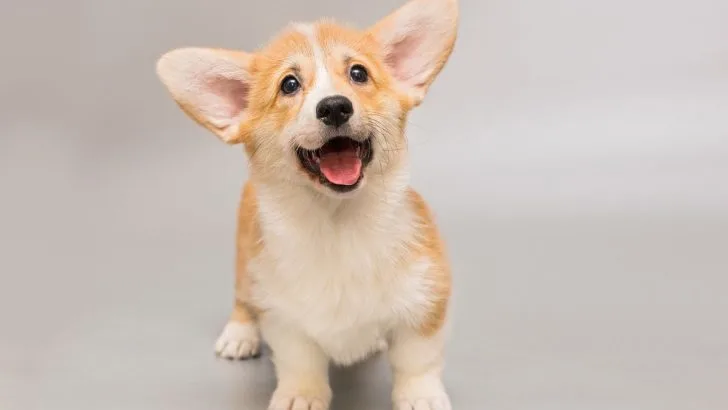Getting a new puppy can be as stressful as it is exciting. Corgi is a beloved dog breed with many owners worldwide.
Even though this dog is a medium-sized cattle herder, you might be concerned about how quickly and big your new puppy will grow. Today, we are discussing the Corgi growth chart to give you peace of mind.
That entitles you to much fun information like the full height of your future best friend and all the weight numbers the Corgi reaches.
We will even go into details like whether there is a notable size difference between male corgi weights & heights and their female counterparts.
The excellent news: Corgi puppies will not grow as significantly as other different breeds like German Shepherd Dogs, but they will still require regular daily walks to fulfill their exercise needs.
These adorable, fluffy dogs are short and long. The Corgis are smart dogs that are friendly, loyal, and obedient with consistent training. Overall, they are a fun and loving addition to your household.
They have a friendly, outgoing character and high energy levels, needing significant exercise to be fulfilled and happy. The Corgi is one of the most popular breeds in the US.
The following chart illustrates various growth stages and assesses Corgi’s weight and height measurements. I have concentrated on the authorized American Kennel Club (AKC) breed standard to create the following Corgi growth chart.
The Corgi Pup Growth Chart
The breed name comes from a Welsh phrase for a dwarf dog, giving away the Corgi’s expected growth.
When you look at a full size Corgi, the first thought you have is I wonder how small he was at birth.
Their short legs most definitely add to the cute, comic-like appearance, but how tall exactly do Corgi pups get?
| Puppy age | Male puppy | Female puppy |
|---|---|---|
| Eight weeks | 4″ -6″ | 4″ -6″ |
| Three months | 5″ -7″ | 5″ -7″ |
| Six months | 7″ -8″ | 7″ -8″ |
| Nine months | 9″ -10″ | 9″ -10″ |
| One year | 10″ -12″ | 9″ -11″ |
| Two years | 10″ -12″ | 9″ -11″ |
This Corgi growth chart demonstrates how tall a Corgi pup can get during the first two years of its life. Dogs grow at different rates, and unlike the larger dog breeds, the Corgi dogs are usually fully grown when they reach their first year of age.
Following the growth shown by the data, we can notice that the male Corgis usually grow taller than the female Corgis. However, the height difference is minimal, as we can see, an inch or litter over an inch.
But how about the weight chart? Does it show any important differences?
The Corgi Pup Weight Chart
In general theory, Corgi pups are not heavy dogs. They appear chubby to people due to their thick coats and short legs. The Corgi pup will never be bigger than its bigger parent. An ideal weight for a Corgi dog is listed in pounds below.
| Puppy age | Male | Female |
|---|---|---|
| Eight weeks | 8-10 pounds | 7-9 pounds |
| Three months | 10-13 pounds | 9-11 pounds |
| Six months | 17-24 pounds | 17-21 pounds |
| Nine months | 19-22 pounds | 18-20 pounds |
| One year | 20-30 pounds | 20-26 pounds |
| Two years | 22-31 pounds | 22-28 pounds |
We could have predicted this outcome by putting our logic to good use. The male Corgis are a bit heavier than their female counterparts.
This is entirely normal and is present in most species on our planet.
If you just got your Corgi pup and it’s a bit smaller or lighter than the chart indicates it should be – don’t panic if some of the pups are shorter and lighter than the others, It’s probably due to gender or genetic differences.
When Do Corgi Pups Stop Growing?
No scientific way exists to tell precisely when any dog will stop growing. We can only give an estimate of a time frame.
From the information provided by breeders and owners of the Corgi breed, following their puppy development, they noticed that Corgi stopped growing when they became one year old.
In other words, when a Corgi pup hits the 12-month mark, it is recognized as an adult.
However, remember that the dog’s growth pattern is different. All dogs are unique and individual in their way. So, some pups might not fit into these parameters.
That being said, each canine will retain rather diverse growing phases and might reach adulthood later in life. If the Corgi does not achieve adult size within the first 12 months of age, it will continue to grow for the next two or even three years.
Usually, the best indicator of growth stopping for pups is an X-ray of the bones. A veterinarian checks for observable growth plates inside the dog’s bones during this procedure.
When these plates close, the Corgi has officially reached adult size.
How Quick Do Corgi Pups Grow?
This breed does not have as many growth spurts as large dogs do. These pups have small changes after one growth stage, lasting during the first six months.
As they reach their first year, most Corgi dogs reach full adult size, with some exceptions.
The Pembroke Welsh Corgi vs. The Cardigan Welsh Corgi
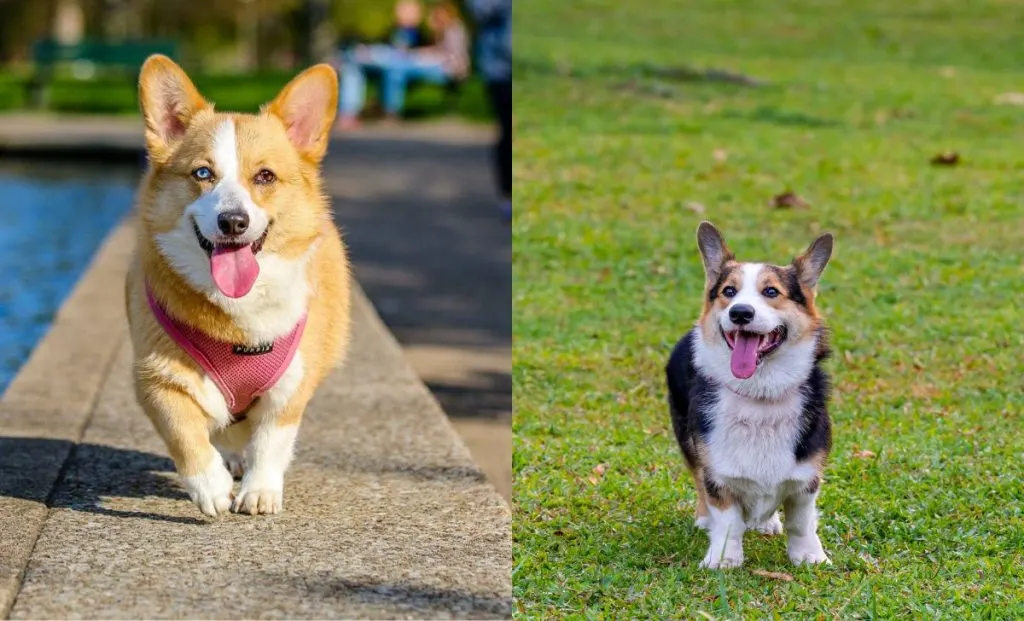
People often refer to this dog breed as only one, but two types of Corgis exist.
So, if we have two of them, do they have different needs, weights, and sizes, or do they share classic puppy features that range across all Corgis?
Both the Pembroke Welsh Corgi and the Cardigan Welsh Corgi have lengthier bodies than they are tall.
In terms of looks, we can compare them to the Dachshunds, except that Corgis are more prominent and fluffier. Both the Corgi types inherit short legs, so they can’t reach extreme heights.
As for their height, there is not much of a difference. The only contrast is half an inch between these two.
For example, the Pembroke type measures between 10 and 12 inches, while the Cardigan Welsh type is between 10.5 and 12.5 inches tall.
Now, their weight is the most noticeable and only real difference between these two.
The male Pembroke Welsh Corgi weighs 30 to 31 pounds, while the female counterpart weighs between 22 and 28 pounds.
However, the female Cardigan Welsh Corgi weighs from 28 to 30 pounds, while males reach up to 38 pounds.
The only exception is if these two Corgi breeds suffer health issues.
Undernourished Corgi dogs weigh drastically less than these measurements. In contrast to that, Corgis who are obese will weigh twice as much as their normal adult weight suggests.
The Male Corgis vs. the Female Corgis
Something important to address is that it seems that male Corgi pups tend to grow faster than female Corgi. Although this is not verified, I believe that they occur to grow faster due to their bulkier physical traits.
Most gentleman Corgis inherit strong bones and heavier muscle mass. Male Corgis are also stockier than females.
However, as the years go by, female Corgis look heavier, while male Corgis seem taller and skinnier.
It depends on each dog itself. If a female Corgi puppy naturally has an enormous appetite, she will be heavier than her male counterpart!
Unless there are some health problems, an exception between Corgi’s male and female weight is when a female dog becomes pregnant.
A female Corgi might carry up to eight pups in one litter. So, you can only guess how heavy she might get during the last days of pregnancy.
Even though the topic today is the Corgi growth chart, I need to mention the differences we can observe in male and female Corgi personalities.
Female Corgis tend to grow mentally faster. They mature faster and act more independently than the males.
But that doesn’t make them harder to train; it makes them much easier to handle than their male counterparts. But both male and female Corgis are brilliant little hounds.
How Long Do Corgis Get?
Now that we have touched upon the fact that Corgi dogs are, in fact, longer than they are taller, we might just put out the Corgi body dimensions.
The height is measured from the withers to the paws of the dog. However, the length of the dog is measured from the top of its nose to the top of its tail.
Therefore, an adult-size Corgi dog is 22″ and 26″ long.
All The Corgi Puppy Developmental Stages
Now for the fun part — the Corgi pup developmental stages, in which we will convey a few remarks about diverse Corgi puppy growth periods.
This Corgi puppy development timeline is extraordinarily helpful for new puppy owners who are interested in what happens each week within the first year of the pup’s life.
From Birth To Two Weeks Of Age
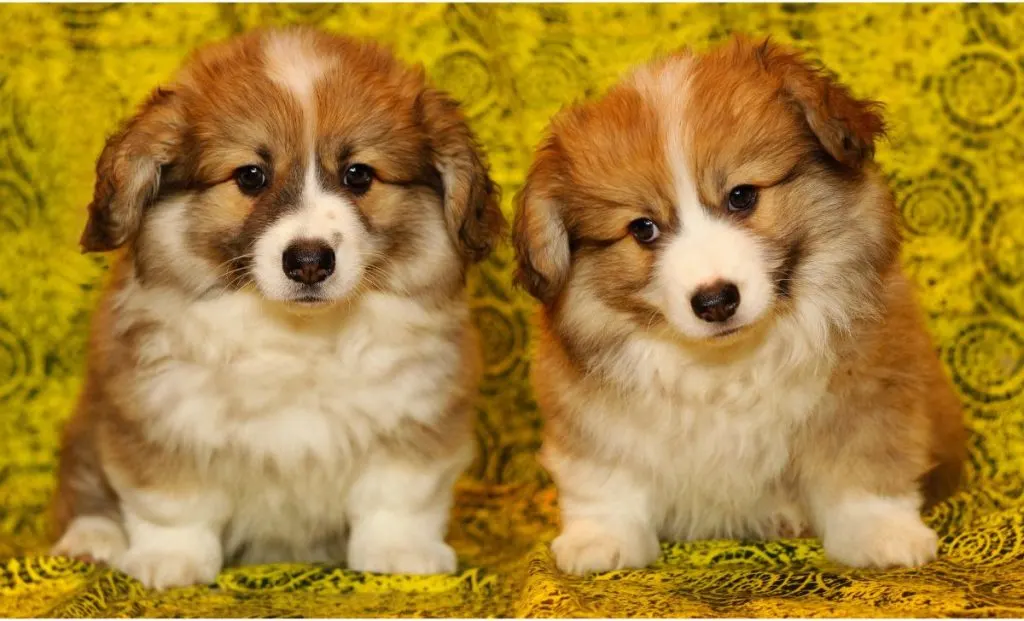
Corgi pup birth is one of the cutest experiences! You know what I’m talking about if you ever saw baby Corgi puppies.
When Corgi pups are born, they usually weigh 2.0 to 2.5 ounces. That’s rather small.
It’s also realistic because each Corgi pup must fit into the Corgi mother’s tummy.
Nonetheless, these small herding dogs don’t stay tiny for too long. Corgi pups are extremely dependent on their mother during the first two weeks of their life.
They are crying, nursing, napping, cuddling and yawning. The Corgi mother is in charge of maintaining them well-fed and clean.
The pups have no observable weight gain in the first two weeks of life.
From Two Weeks To Ten Weeks Of Age
This puppy development period is when all the fun starts. Three weeks of age still celebrates the “passive period” in their development process.
Nonetheless, you can see some pups are already trying to move independently. The dogs are becoming more active as their senses start to sharpen.
Since many puppies are in the litter, most pups will fight for the right to drink milk from their mom. And some of them will turn into real big cry babies when things don’t go their way.
Corgi puppies should have developed all their senses at four to five weeks. They can see well and smell even better.
This only means that it is time for adventure! Between four and six weeks, Corgi puppies play more and more with one another.
The pups in this period will also become more interested in what goes on around the house. During this period, the foxy-looking Corgi puppies will try to shuffle away from their crate.
These puppies are curious about what’s around them. Their teeth also start emerging, so you had better prepare some quality chew toys!
From Ten Weeks to Four Months Of Age
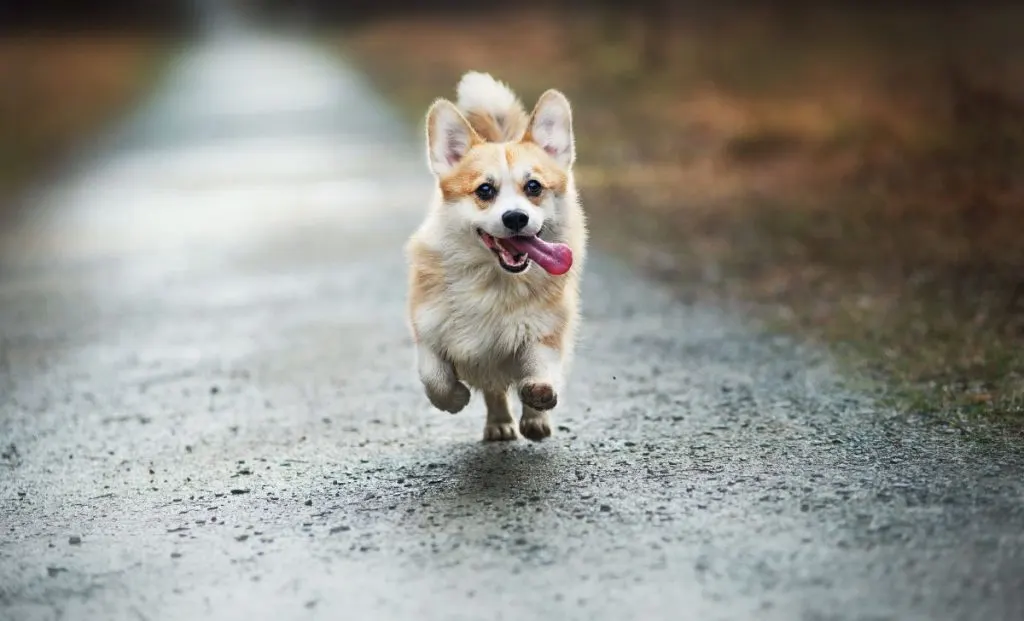
As the puppies start growing their teeth, Mother Corgi decides to end breastfeeding her babies.
So, this period is when the pups usually switch to puppy food. Most puppies are adopted or bought when they are eight weeks old.
The transition from mother’s milk to kibble or any other puppy food must start slowly and steadily.
Do not make any sudden or drastic changes. Most Corgi breeders or owners start by adding water to puppy food. This helps the pup’s digestive system get used to less concentrated puppy food.
A Corgi pup should weigh between 11 and 16 pounds by four months of age. This is almost half of the Corgi’s adult weight. You can expect your Corgi pup to gain between four and five pounds each month.
This period is significant for the socialization and training of the pup. You can start earlier because Corgis are active and eager to learn pups.
From Four Months To Six Months Of Age
At six months, the Corgi pup should weigh between 17 and 23 pounds. This period marks halfway to the dog’s adult size.
So, instead of gaining five pounds each month, the six-month-old Corgi puppy will gain two to three pounds until adulthood (usually at twelve). You were very wrong if you thought the teething period was over.
The Corgi pup has grown a new set of teeth — now it has its permanent big girl or boy teeth! So, this may be the best time to buy a new set of dog toys. By this time, your Corgi puppy should be well-socialized and trained.
By training, I mean it should know the basic commands and manners. Remember that during this period, all Corgi puppies are incredibly energetic.
They are so enthusiastic and active that they occasionally forget that you exist! But, seriously, Corgi dogs tend to be a bit adamant and self-reliant.
But tell them you’re there by spoiling them with quality playtime.
From Six Months To Ten Months Of Age
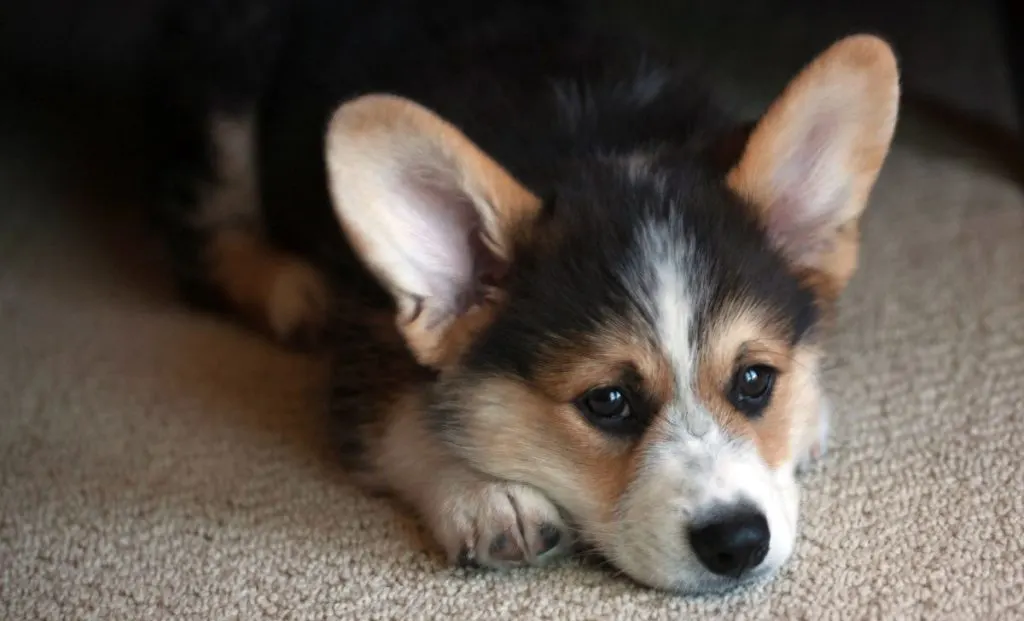
The period between six and ten months is usually when owners ask themselves, “Why on earth did I get this dog?” Now everyone has their hands full trying to follow a hyperactive Corgi puppy!
No wonder Corgis is suitable for active people. If you can follow a seven-month-old adolescent Corgi pup’s rhythm, you can do it all!
During the period between six and ten months of age, Corgis are teenage pups all over the place. Most male dogs show signs of wanting to mate, while ladies tend to wander and act independently.
The Corgi dog breed is particular, and this time of life is crucial for socialization. If you let your Corgi pup do whatever it wants, its behavior can quickly turn bad.
Although Corgis aren’t usually labeled as aggressive, a high bite incidence is recorded with this breed. So, go through a diligent socialization process with your Corgi puppy.
From Ten Months To Twelve Months Of Age
We’re a bit close to reaching adulthood. Most ten-month-old dogs still behave as adolescent pups. Nonetheless, when they reach twelve months of age, Corgis are considered adult dogs.
They also reach sexual adulthood by the first year of age.
Most Corgi owners decide to neuter or spay their one-year-old Corgis, although these procedures may be done as early as six or nine months of age.
Over A Year Of Age
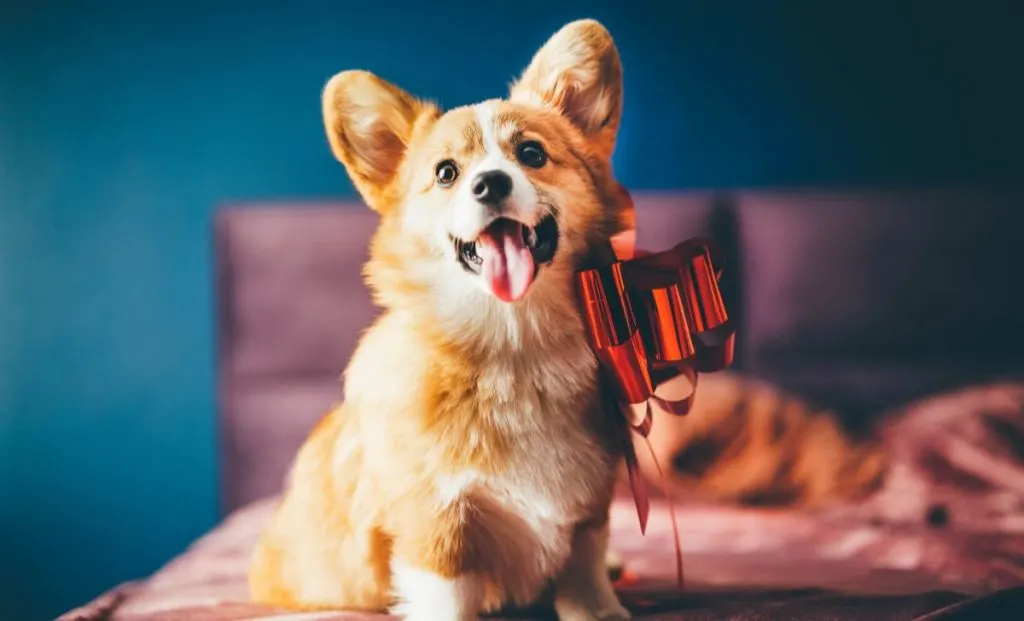
Once the dog reaches twelve months of age, you must ensure your Corgi puppy gets enough exercise. A one-year-old Corgi dog is still very young and has not stopped growing.
However, it should remain as energetic as it was. Just make sure not to overdo the exercise.
There should be a proportion between a healthy diet and regular exercise. This way, you ensure your adult Corgi dog doesn’t acquire excess weight that may lead to health issues.
Most adult-size Corgi dogs start to shed quite a lot. But this is more of a breed-specific trait, so it’s normal for this herding dog breed.
Is The Corgi Breed For Me?
Whether you’re in search of a lap companion, a herding partner, a diligent worker, or simply a loyal friend, you’ll likely find all these qualities in a Corgi.
However, proper socialization is key to unlocking their full potential.
Corgis are generally affectionate, with some being great with children, while others require supervision.
It’s common to find shelter Corgis with a history of aggression, but don’t let this deter you from considering a Corgi puppy.
Patience is crucial with this breed, and their upbringing and your commitment play vital roles in their development. Corgis demand attention at each stage of growth.
If however, you are like me and flirt with the bigger breeds as well, you should check out the mighty Anatolian Shepherd growth chart.
I wish you all the best with your new family addition, whatever size they end up being!
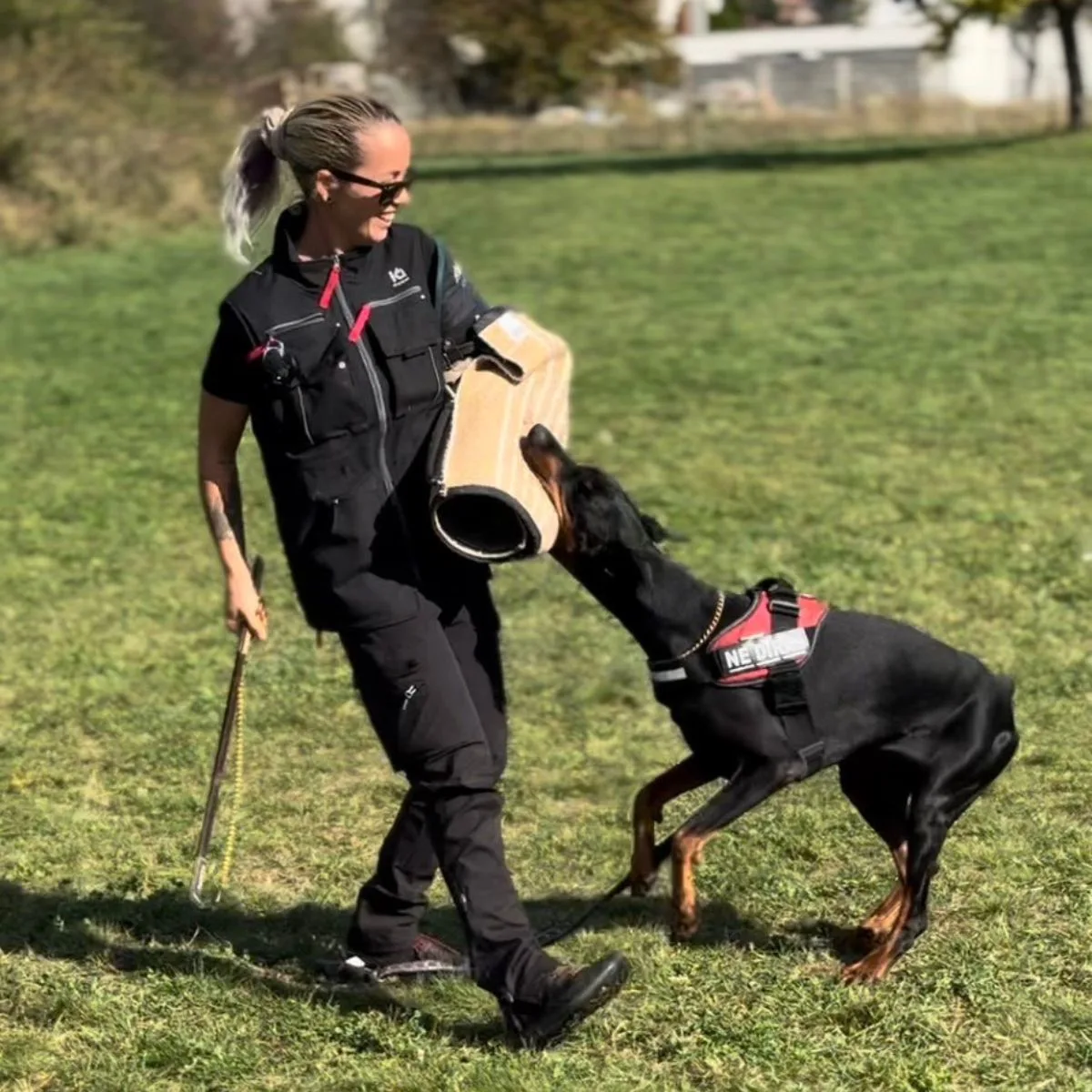
Nandina has been a lifelong dog owner and enthusiast. She shared her home with multiple breeds, including Giant Schnauzers, Cane Corsos, and Huskies. Currently, she is raising a three-year-old rescue and a working-line German Shepherd puppy.
Actively engaged in IGP dog sports for two years, Nandina is a certified instructor for basic obedience and socialization. She works as a trainer in her local dog sports club, and in her spare time, she handicrafts biothane gear for dogs.
